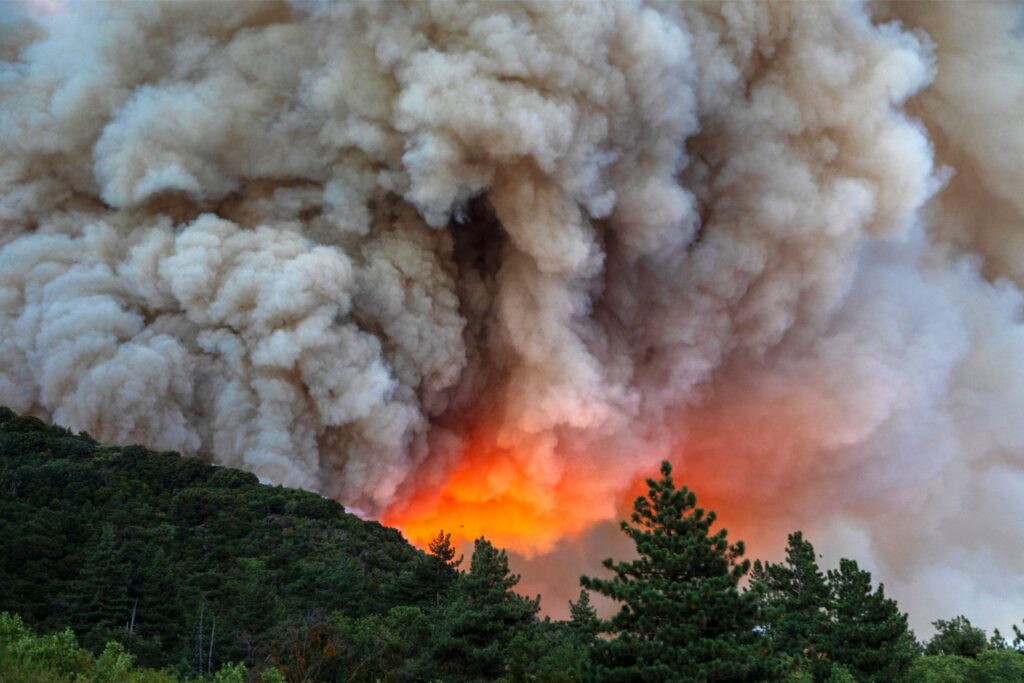
Wildfire smoke has reversed a quarter of air quality gains achieved under the federal Clean Air Act, according to a new study published in Nature.
The Clean Air Act, first approved in 1972, targets particulate matter called PM2.5 that is 30 times smaller than the diameter of a human hair. PM2.5 is commonly emitted through the burning of coal or gas but is also found in smoke from forest fires.
PM2.5 dropped by 42 percent nationally between 2000 and 2022, as more coal- and gas-fired plants were closed or retired, and as catalytic converters and other technology worked to reduce pollution.
Today, wildfire smoke is the primary cause of bad air in four western states, and a major contributor in 17 others.
Hazardous air quality is now routine in much of the western United States, especially during the summer months when fires are raging. Yet PM2.5 has the ability to travel thousands of miles, impacting air quality throughout the country.
Between 2006 and 2020, we’ve seen an 11,000-fold increase in the number of people in the U.S. experiencing the most extreme levels of smoke pollution, and a 27-fold increase in the number of people living in areas experiencing unhealthy air at least one day per year.
Wildfire smoke is not just an environmental problem, it’s a public health crisis. PM2.5, carbon monoxide, nitrous oxide and other dangerous toxins can be extremely harmful to the lungs, especially for children, older adults and those with asthma, COPD and bronchitis or chronic heart disease or diabetes.
It has been linked to premature death and many other terrible health outcomes such as learning and behavioral problems in children.
That’s why active forest management, including thinning overstocked and careful prescribed fire, is just as important to human health as it is to improving the health and resiliency of our forests. More public health advocates are taking notice.
The California Council on Science and Technology (CCST) and Blue Forest recently released a report exploring how forest management is linked to reducing the overall smoke burden on populations and the resulting impact on human health and health organizations.
They found greater collaboration between forest managers and the health sector in the pursuit of resilient forests would help drive progress in improving ecological and human health outcomes.
In case we need more reasons to manage our forests, it is also essential to reduce air pollution throughout the United States and to protect the health of millions of Americans.



